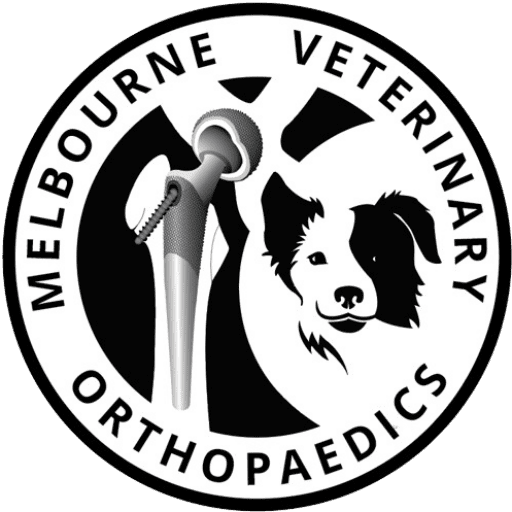Anaesthesia
Anaesthesia in veterinary surgery is a critical component of veterinary medicine that ensures the safety and comfort of animal patients undergoing surgical procedures. Here’s an overview of key aspects:
Types of Anaesthesia
General Anaesthesia: Induces a reversible state of unconsciousness and absence of sensation throughout the body. It is used for major surgeries.
Local Anaesthesia: Blocks sensation in a specific area of the body. It’s used for minor procedures or to manage pain post-surgery.

Regional Anaesthesia: Similar to local anesthesia but affects a larger area (e.g., epidurals).
Sedation: Reduces anxiety and induces a state of relaxation, often used for procedures that do not require full anaesthesia.
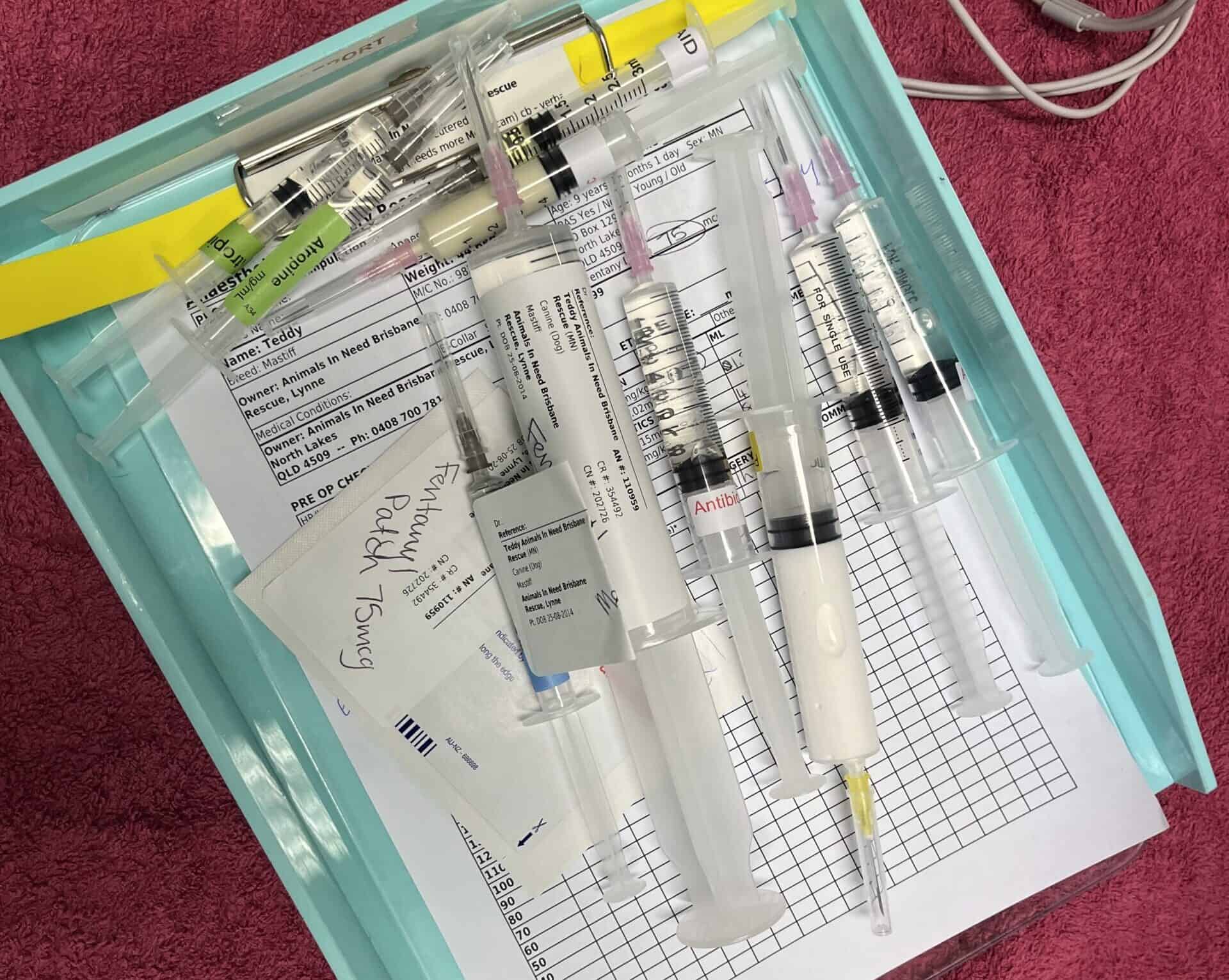
Anaesthetic Agents
Injectable Anaesthetics: Commonly used agents provide a rapid onset of action and are typically administered to induce anesthesia.
Inhalant Anaesthetics: Isoflurane and sevoflurane are commonly used. They allow for precise control over anaesthesia depth and are often used for maintenance.
Pre-Anaesthetic Considerations
Assessment: A thorough pre-anaesthetic evaluation is essential, including physical exams, blood tests, and assessment of the animal’s medical history.
Fasting: Animals are usually fasted prior to surgery to reduce the risk of aspiration during anaesthesia.
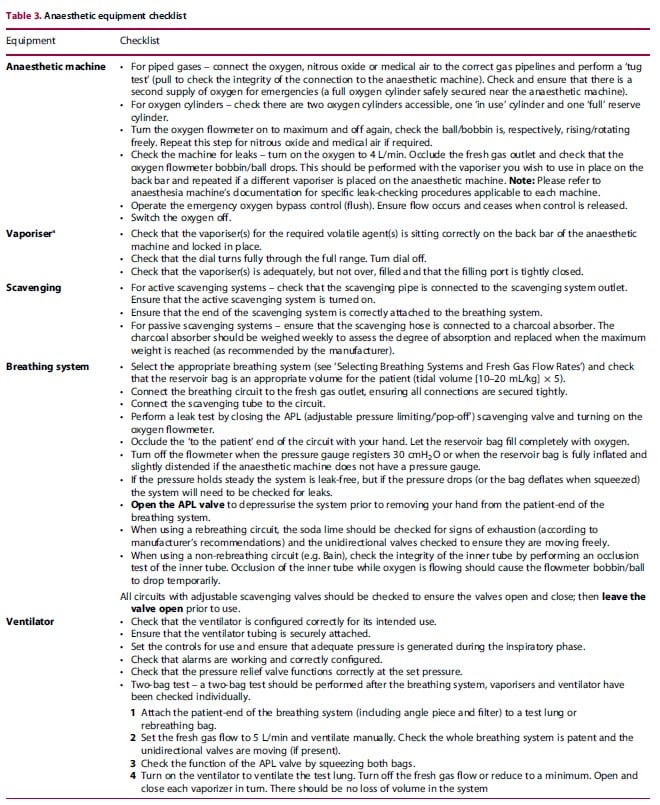
Surgical safety checklist
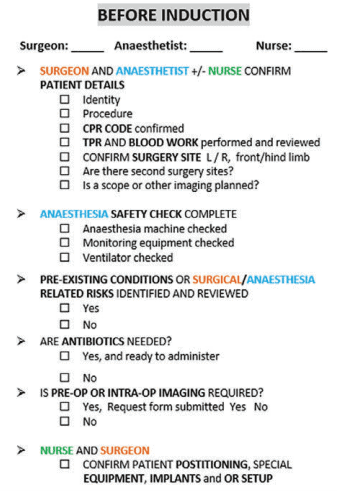


Monitoring During Anaesthesia
Vital Signs: Continuous monitoring of heart rate, respiratory rate, blood pressure, oxygen saturation, and temperature is crucial to ensure the animal’s safety.
Anaesthetic Depth: Adjustments may be needed based on the animal’s responses, including reflexes and muscle tone.
Recovery
Post-Operative Care: Animals are closely monitored as they wake from anesthesia. Pain management, warmth, and hydration are important during recovery.
Complications: Awareness of potential complications, such as hypothermia, respiratory depression, and adverse reactions to anaesthetic agents, is crucial.

This cat had a growth plate fracture adjacent to the knee joint. Open surgery with implants is painful and requires aggressive proactive medical management.
Pain Management
Effective pain management is an essential part of anesthesia, often using a multimodal approach to ensure comfort during and after surgery. This may include combinations of systemic medications as well as localized techniques such as nerve blocks.
Special Considerations
Species Differences: Anaesthesia protocols may vary significantly between species (e.g., dogs, cats, exotic animals), necessitating specific training and knowledge.
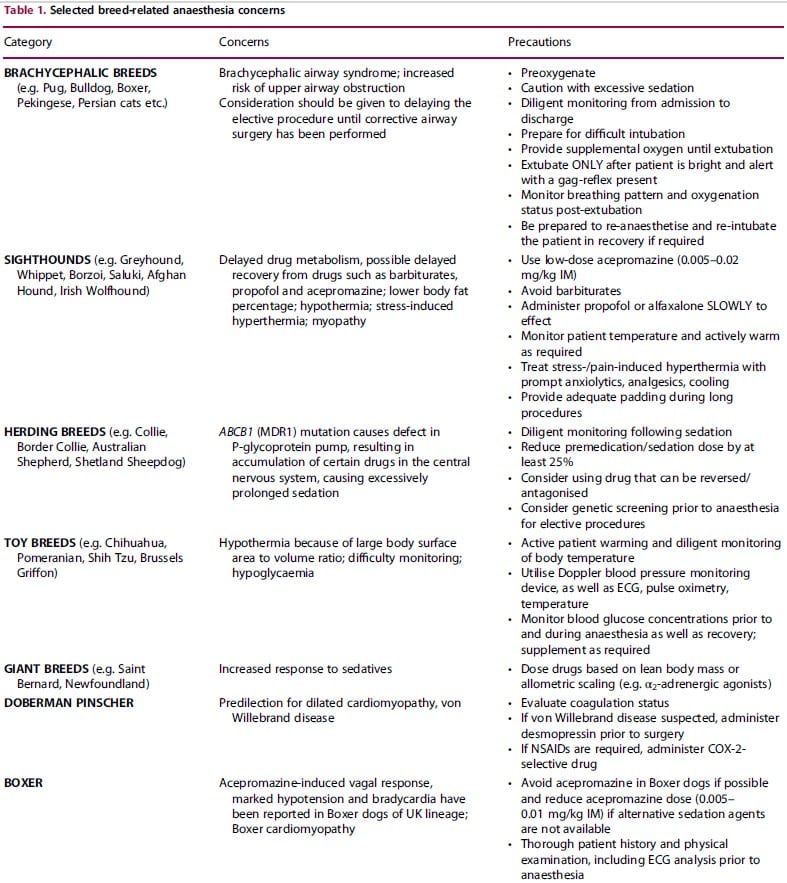
Comorbidities: Animals with pre-existing health issues may require tailored anaesthetic protocols and closer monitoring.
Veterinary anaesthesia requires a skilled team, including veterinarians and veterinary technicians, to ensure a safe and effective procedure. Advances in anaesthetic techniques and monitoring technologies continue to improve outcomes for animal patients.
Hypothermia
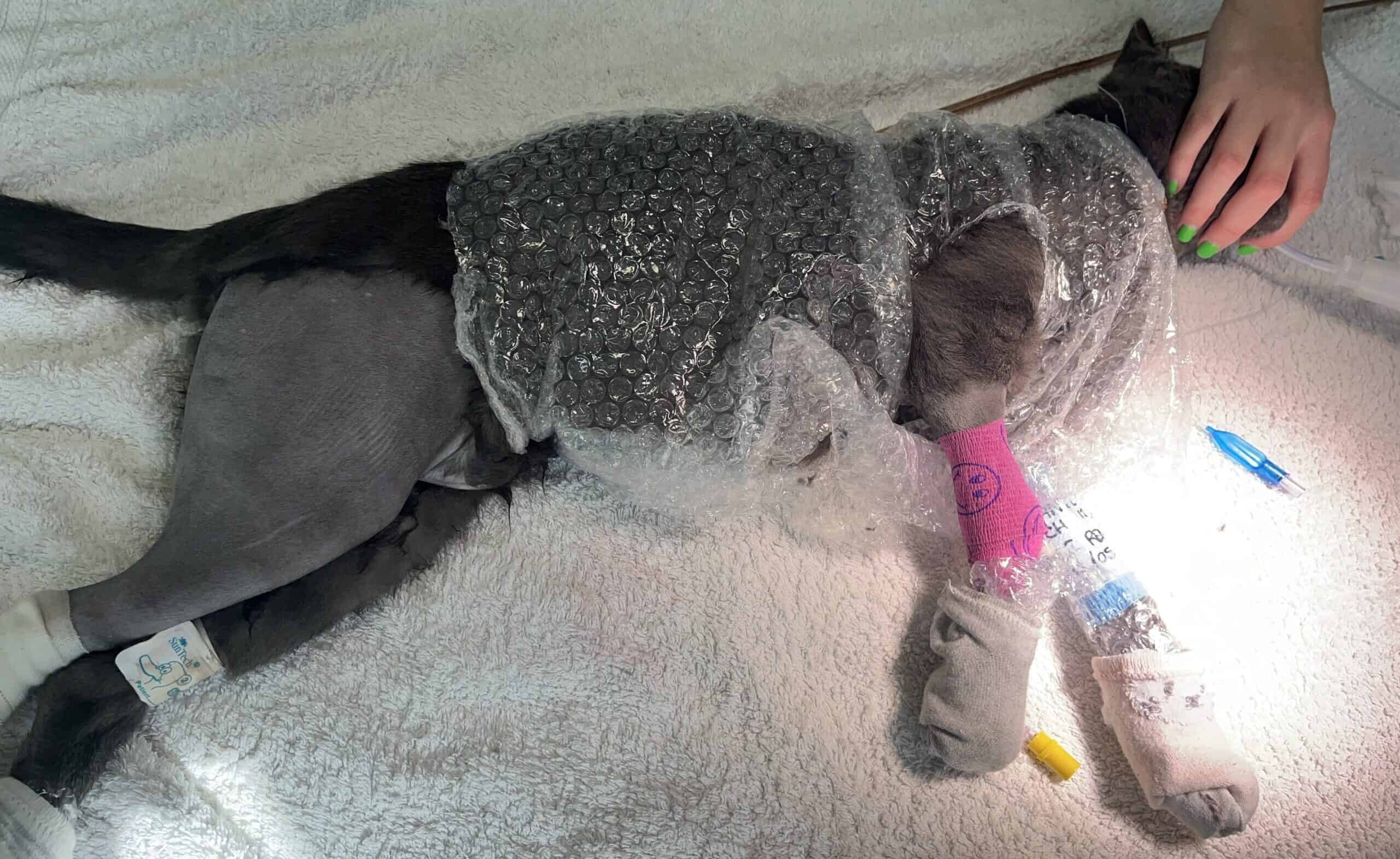
All pets undergo heat loss through the skin whilst under anaesthesia. This offer is less in overweight and larger patients, conversely, tiny pets and those with limited fat reserves lose heat faster. Longer duration anaesthesia and more exposed body parts lead to even more heat loss. If large areas of the body are clipped and prepared with alcohol based disinfectants or baby cavities are opened, the core temperature lowers quickly, often to 32 degrees. Active warning allows staff to limit heat loss. Heating mats and forced warm air systems are useful to prevent severe hypothermia.
Forced warm air The patient is positioned on an operating table by nursing staff. Monitoring equipment is connected. An inflatable blanket is placed over the patient’s body and secured in place. A silver thermal blanket is then applied to ensure the circulating air in contained. This can be “tucked in” under the patient. Then a long flexible hose is connected to the blanket and the heating unit turned on. Staff can select the temperature.
Brachycephalic Anaesthesia
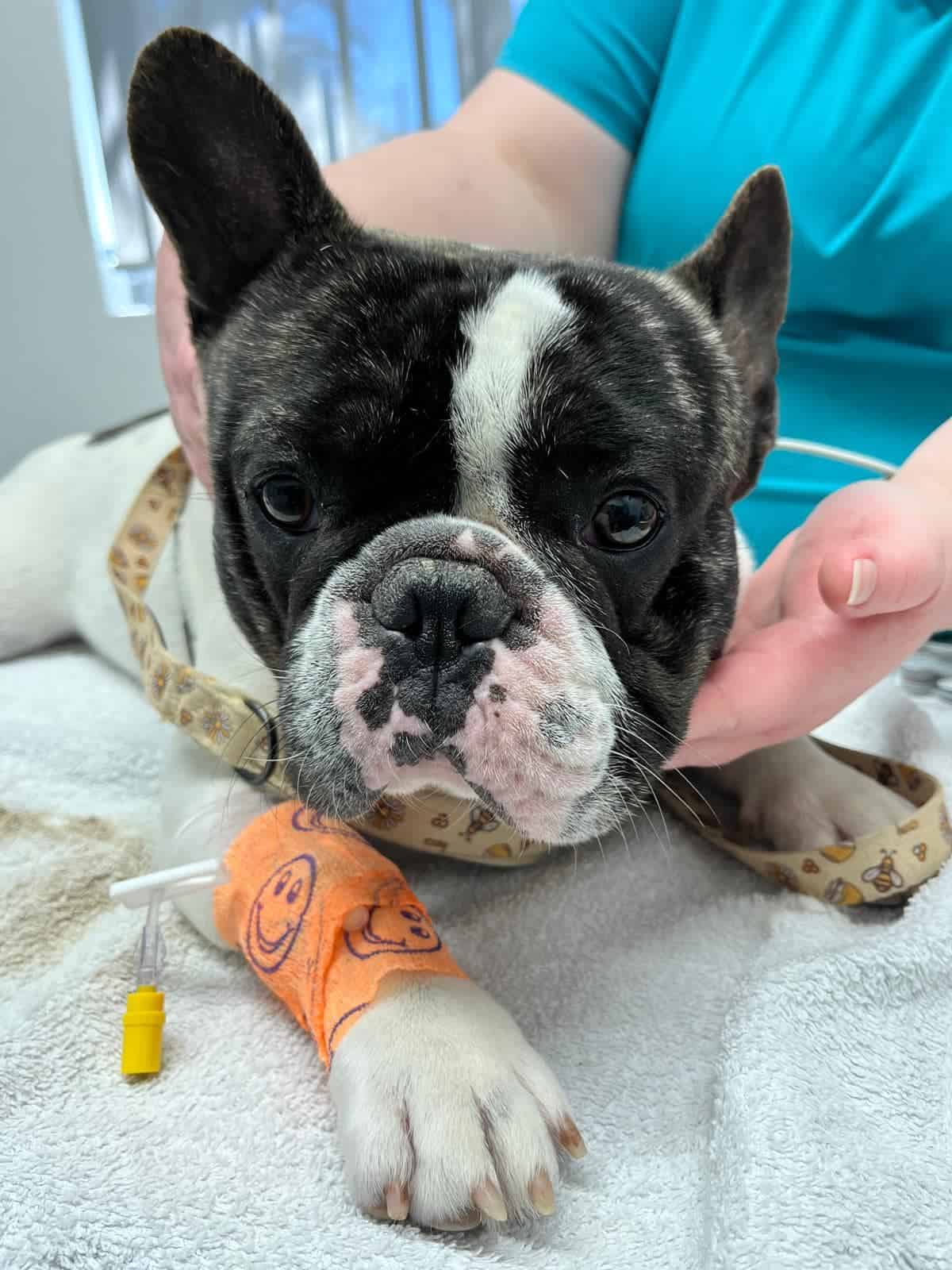
This cute Frenchy has a leg catheter and bandage in place ready for anaesthesia. This is now the most popular breed of dog in Australia but upper airway issues are prevalent.
Anesthesia for brachycephalic breeds (dogs and cats with short muzzles, like Bulldogs, Pugs, and Persians) requires special considerations due to their unique anatomical features. Here are some key points to keep in mind:
Anatomical Challenges
- Airway Obstruction: Brachycephalic animals often have narrowed airways, leading to increased risk of obstruction during anesthesia.
- Soft Tissue Issues: They may have elongated soft palates, stenotic nares, and other airway abnormalities that can complicate breathing.
- Higher Risk of Hypoxia: These animals may struggle to maintain adequate oxygen levels during sedation or anesthesia.
Pre-Anesthetic Considerations
- Thorough Assessment: A complete physical examination, including assessment of respiratory function, is essential. Consider diagnostic imaging if necessary.
- Pre-Medication: Using medications that allow for a smooth induction while maintaining respiratory stability is critical. These agents may also be used cautiously to provide additional calming or pain relief when required.
Anesthetic Protocol
- Induction: Rapid-acting injectable anesthetics (like propofol) are preferred for a smooth and quick induction. Avoid agents that may cause respiratory depression.
- Intubation: Endotracheal intubation is crucial to secure the airway. Pre-oxygenation can help minimize the risk of hypoxia.
- Anesthetic Maintenance: Inhalant anesthetics (like isoflurane or sevoflurane) are commonly used, as they can be adjusted quickly based on the animal’s response.
Monitoring
- Continuous Monitoring: Close monitoring of vital signs (heart rate, respiratory rate, oxygen saturation) is vital throughout the procedure.
- Ventilation Support: Be prepared to provide positive pressure ventilation if respiratory distress occurs.
Post-Anesthetic Care
- Recovery Monitoring: Brachycephalic breeds may have prolonged recovery times and need careful observation for any signs of respiratory distress.
- Minimize Stress: Keeping the recovery environment calm and quiet can help reduce anxiety and respiratory complications.
Conclusion
Anesthesia in brachycephalic breeds requires careful planning and monitoring to mitigate risks associated with their unique anatomy. Collaborating with a veterinarian experienced in managing these patients is essential for ensuring their safety and well-being during procedures. If you have a brachycephalic pet, discuss any concerns with your veterinarian before anesthesia.
